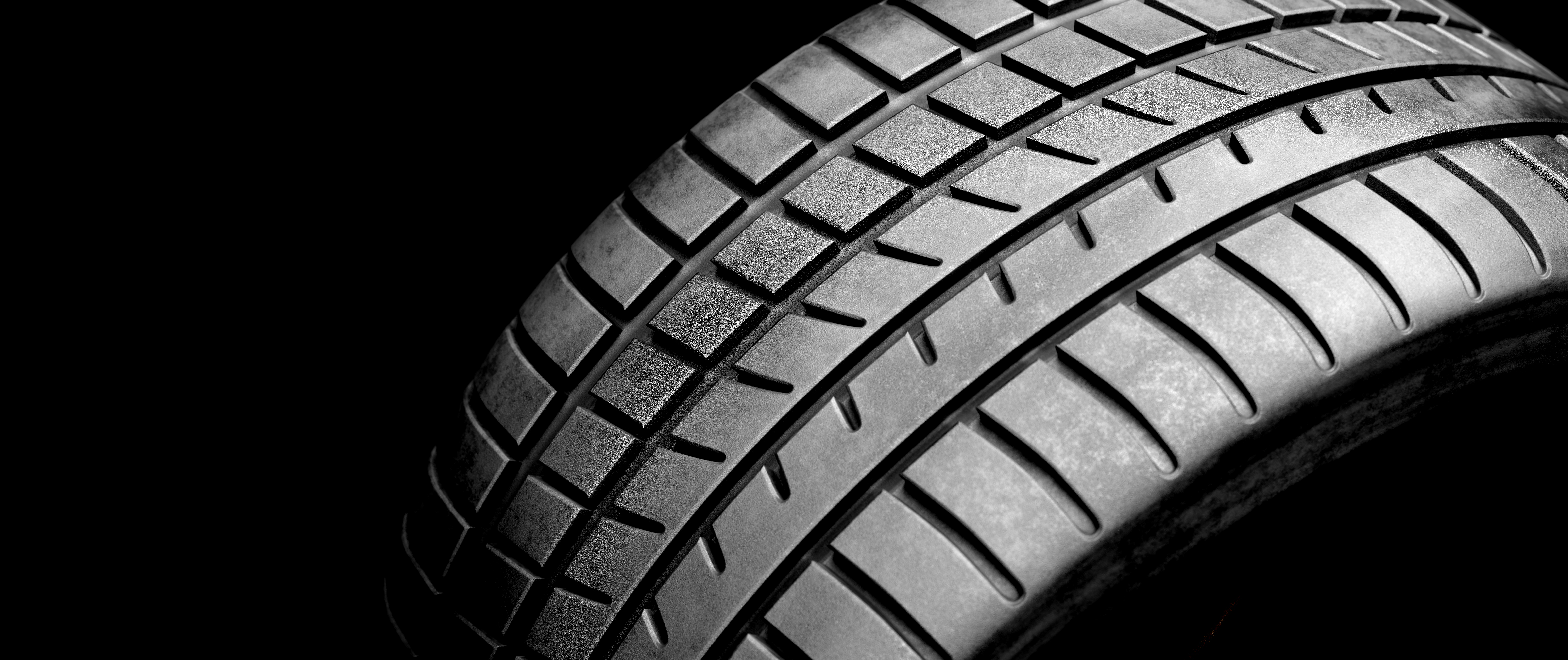Tires are just tires, right? As long as you have good tread, you’re good for the road. Well, that’s not the whole story. Tires have different types of tread, each of which helps determine your performance and road wear and even how your tires are serviced. So, let’s get into it. What are the different types of tire treads?
Directional
Directional tires are what it says on the tin. These tire treads show a visible, singular direction V-pattern. Generally, they’ll also feature an arrow on the sidewall to signal the direction of the pattern, and they may have lateral grooves in the tread.
Performance: Directional tires do well when hydroplaning, as the directional V tread directs water and provides greater resistance. This makes them a good choice if you live in an area with a lot of rainfall or if you have roads where water pools up unpredictably.
Servicing: Because the tires are designed for one direction, directional tires are rotated from to back but not side to side. However, this limits overall tire versatility.
Symmetrical
Symmetrical tires feature tread patterns in continuous grooves and blocks running across the whole tire
Performance: The steady tread design of symmetrical tires provides long-lasting and quiet performance. These are tires that have a long lifespan.
Servicing: Because the tread patterns are the same across the tire, symmetrical tires can be rotated front/back and side/side.

Asymmetrical
Asymmetrical tires feature a hybrid of patterns across the tire, with wet traction grooves closer to the center of the pattern while larger dry traction blocks are on the outer portions of the tires.
Performance: Because of the dual design of asymmetrical tires, they perform well on both wet and dry surfaces.
Servicing: Because asymmetrical tires don’t use directional tread for water resistance, they can be rotated in multiple ways.
Directional/Asymmetrical
Directional/Asymmetrical tires feature both the V-patter of directional treads to discharge water away from the tire with the large dry traction blocks.
Performance: These tires work well for both dry weather and provide the high-resistance to hydroplaning with the V-pattern treads.
Servicing: Because directional/asymmetrical tires use the direction V-pattern tread, they can only be rotated front to back.
What Tread Is Right for Your Vehicle?
Choosing the right tread for your vehicle is important. Tire performance impacts safety on the road as well as your pocketbook, as some tires may need to be changed more frequently than others. Tire performance also impacts your fuel efficiency – a better grip on the road means more efficient acceleration, further impacting the cost efficiency of tires.
Are You Buying or Restoring a Classic Car in Huntingdon Valley, PA?
If you you’re buying or restoring a classic or want a new paint job for your current vehicle, contact us to schedule an appointment.




